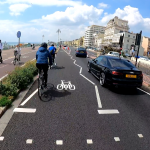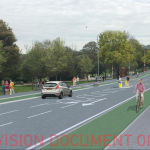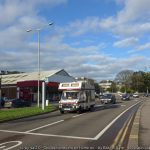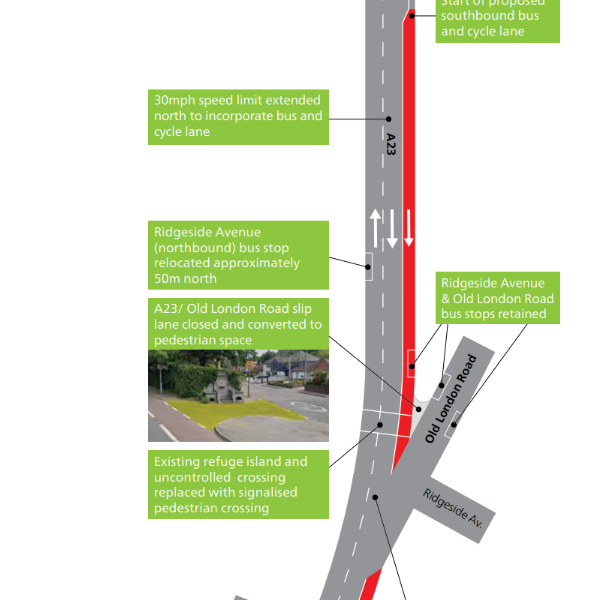The proposed plan for Valley Gardens Phase 3 has been completely redesign upon consultation feedback in 2018. The new plan provides for a better continuous segregated cycleway besides the A23 with safer crossings along with the Seafront Junction becoming a CYCLOPS junction with two-way traffic.
These new plans will go in front of the Environment, Transport & Sustainability Committee next Tuesday where they will decide the future of the scheme.
The revised plans
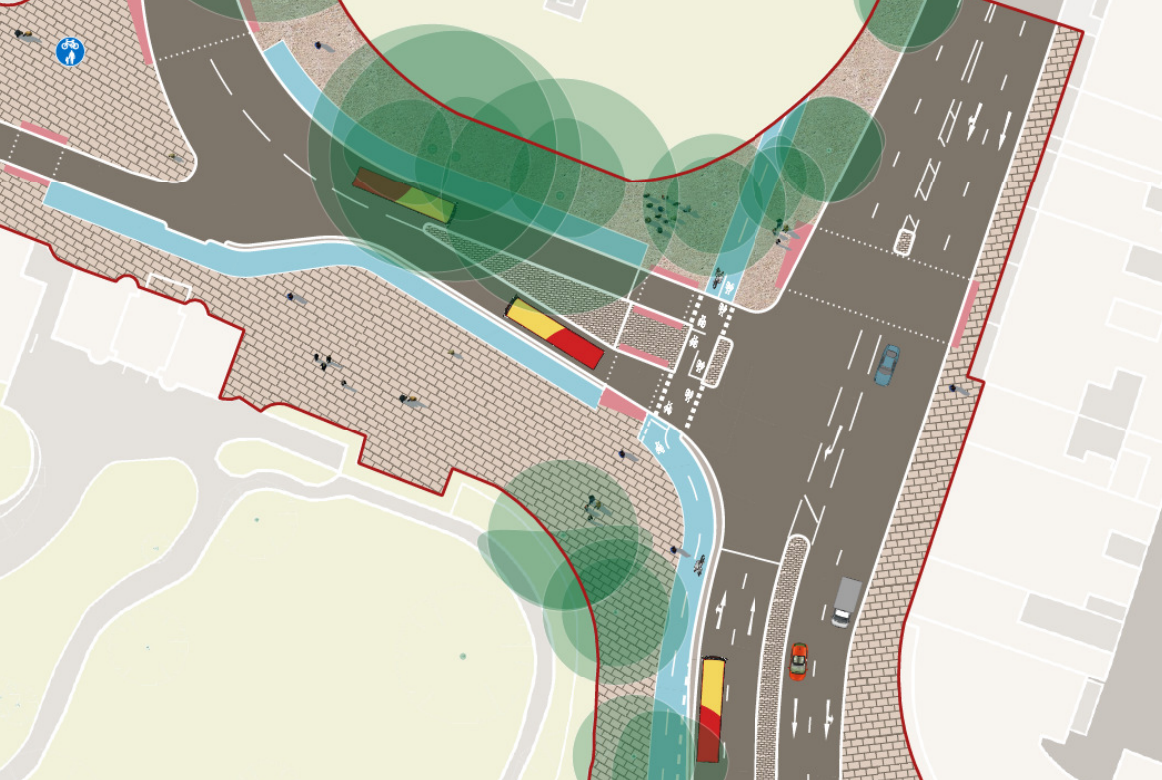
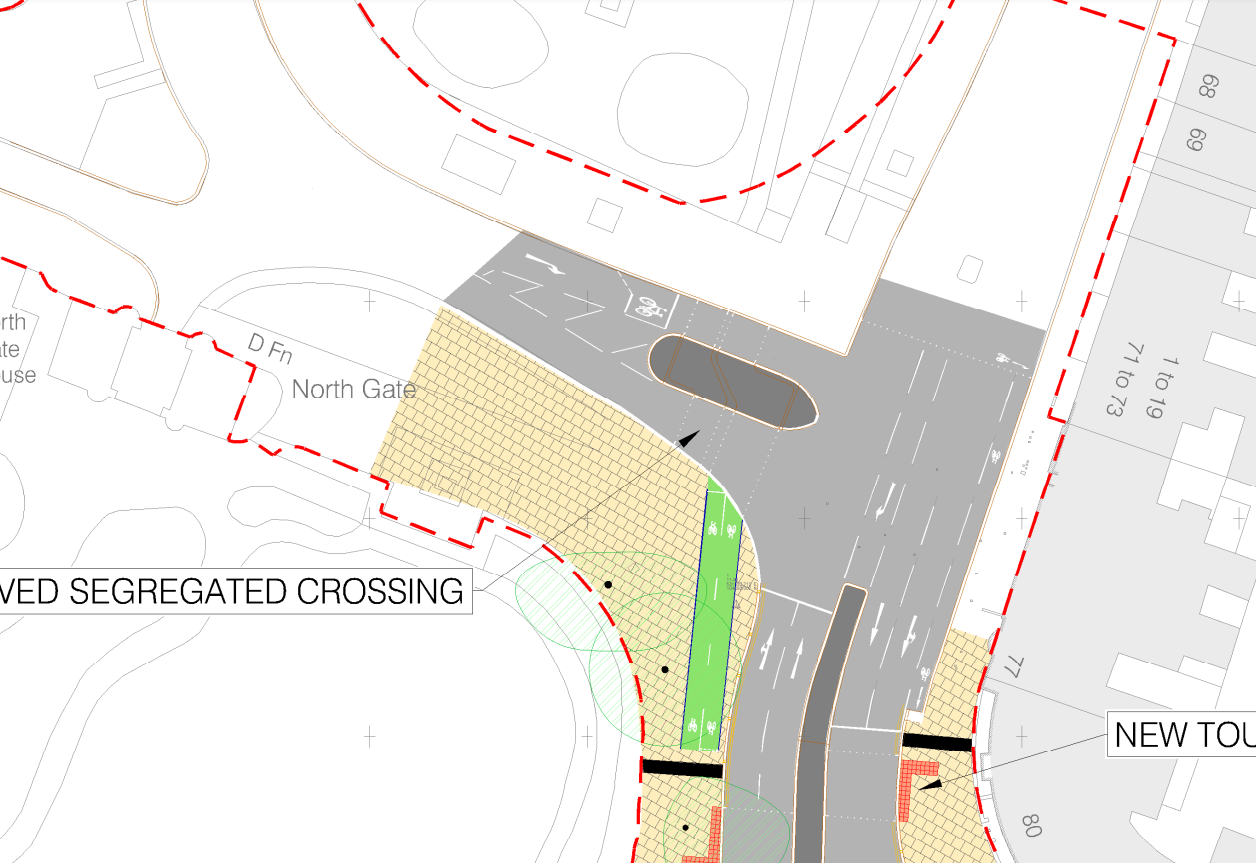
Although the junction at Church Street was redone as part of phase 1/2 of the Valley Gardens, changes have been proposed here which would tie in the extension to the cycle way. Initially an in-line single stage segregated pedestrian & cycle crossing was proposed across Church Street, however this has now been replaced with a staggered two stage segregated crossing. This is likely due to having a lesser impact on buses turning on/from the Western side of the gardens.
It was also initially proposed that segregated cycleways would be provided beside Church Street to allow cycle access to/from it, however this is now dropped. It can be presumed access to/from Church Street would be made using the current shared use area on the Northern side.
The new proposal also improve access to Edward Street by providing a new Toucan crossing for those coming from the South, and a short section of cycle lane A23 Southbound from the North.
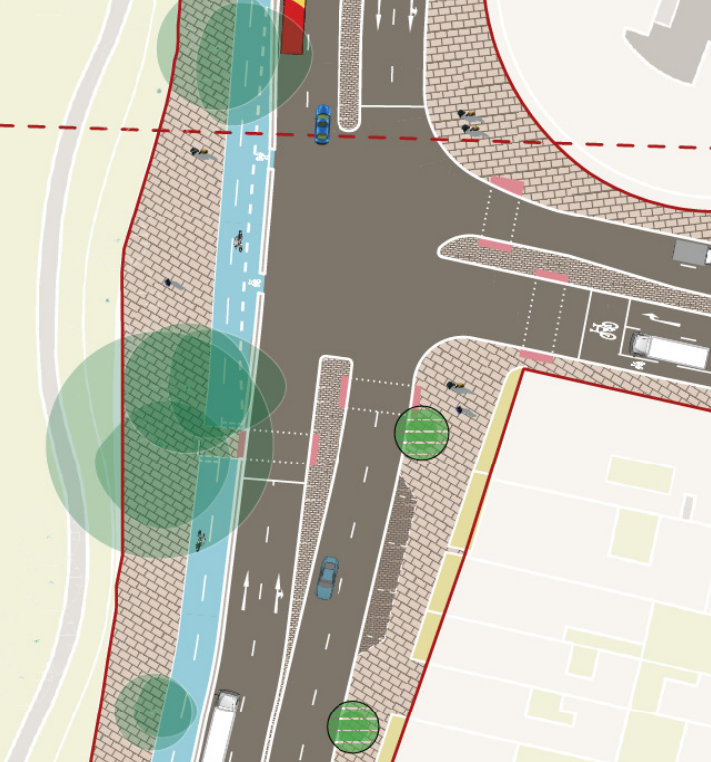
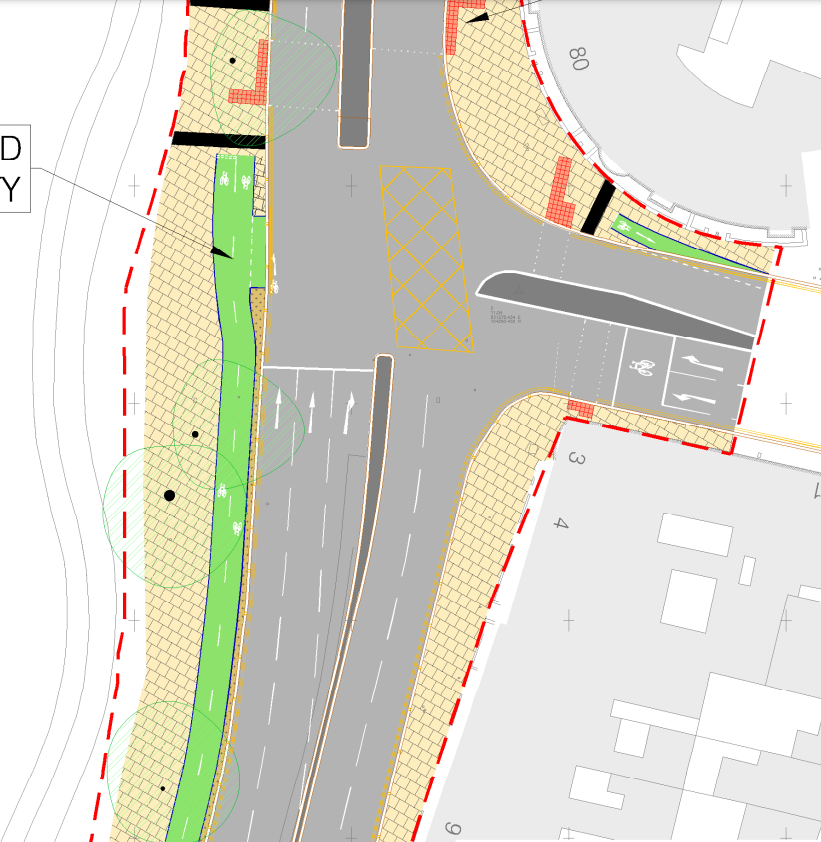
Edward Street has received many changes. For starters access to Edward Street for cyclists is now made by the Toucan crossings rather than a dedicated signal controlled access point to the junction, this does used shared areas. The access to the cycleway from Edward Street has been enlarged.
The current Puffin crossing across the southern arm of the junction will be removed to make way for a dedicated right turn lane, this will result in better & safer traffic movements, pedestrians will be able to cross the road across the Northern arm instead.
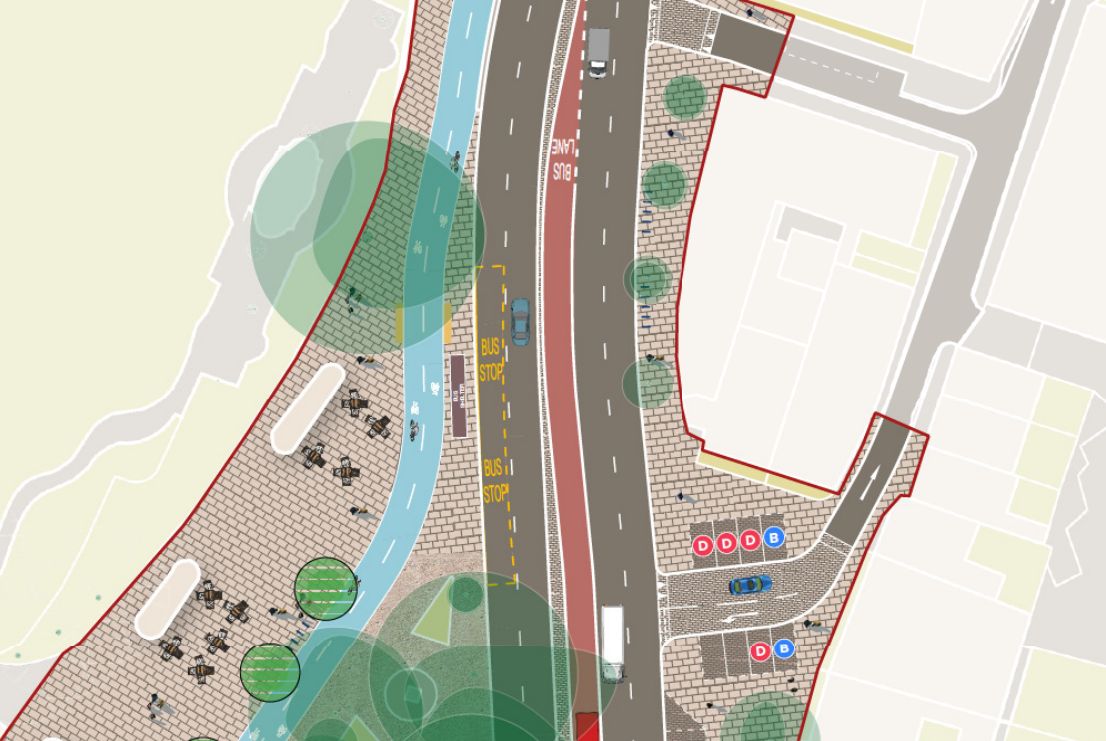
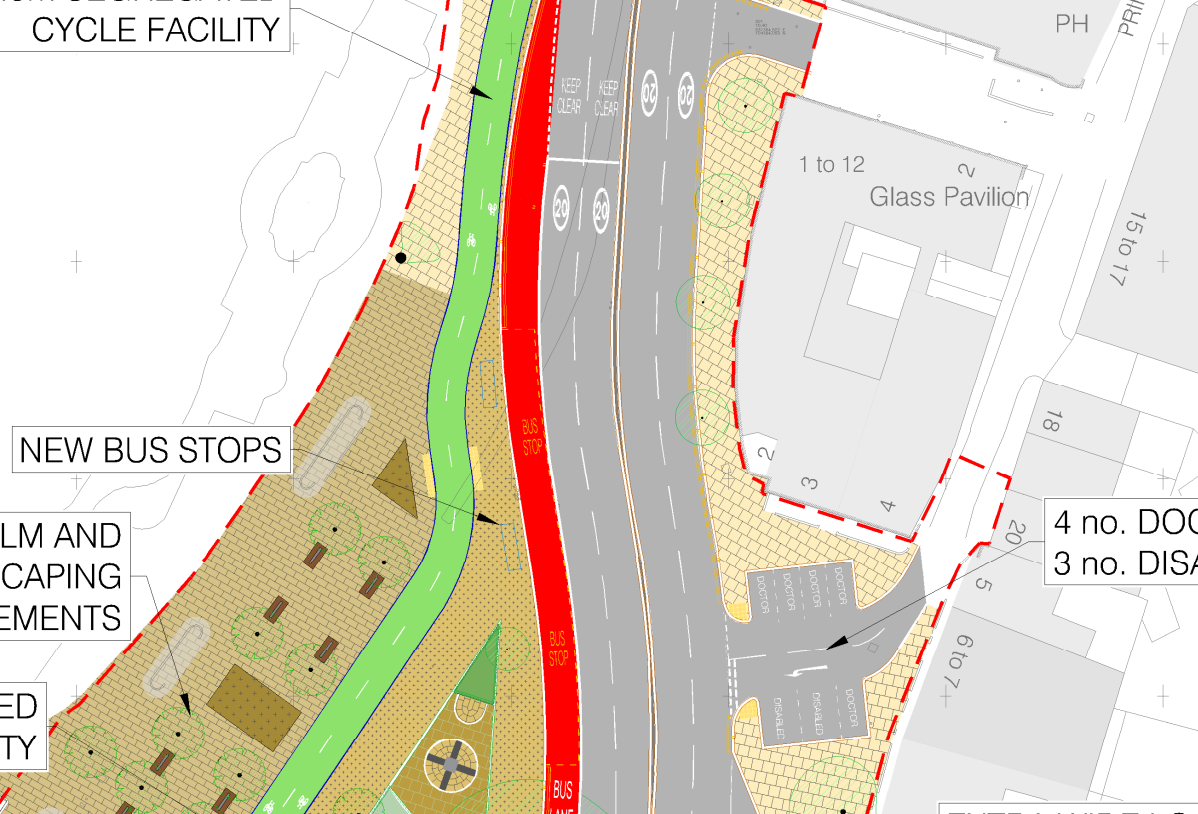
The Northern section of the Steine Gardens has received layout changes involving providing the bus lane on the Northbound Carriageway instead of the Southbound Carriageway. Also the formalised car parking outside the doctors will have one less parking space providing 4 doctor bays & 3 disabled bays instead of 2 doctor bays, 4 disabled bays & 2 unspecified spaces.
The cycleway remains almost unchanged with some uncontrolled pedestrian crossings.
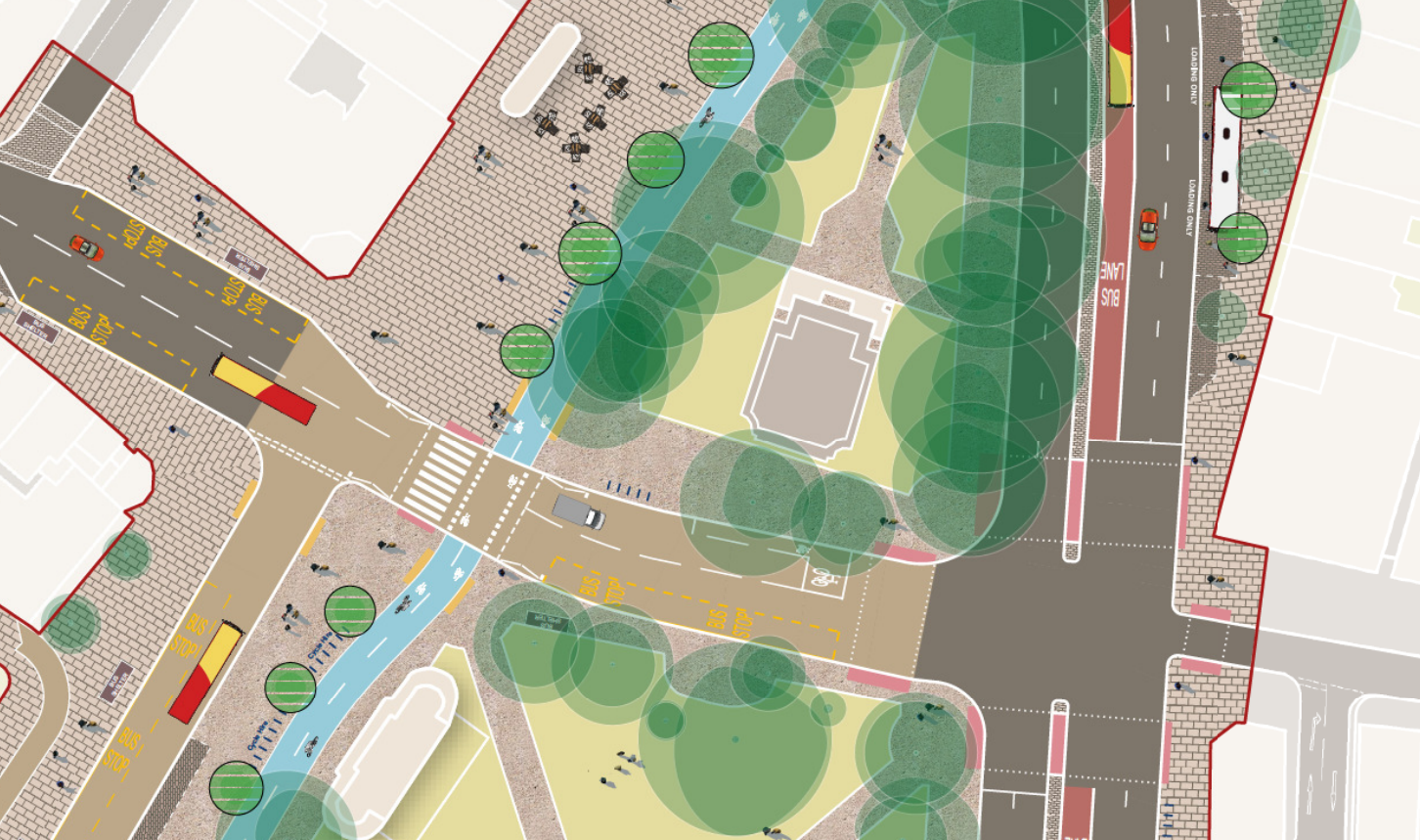
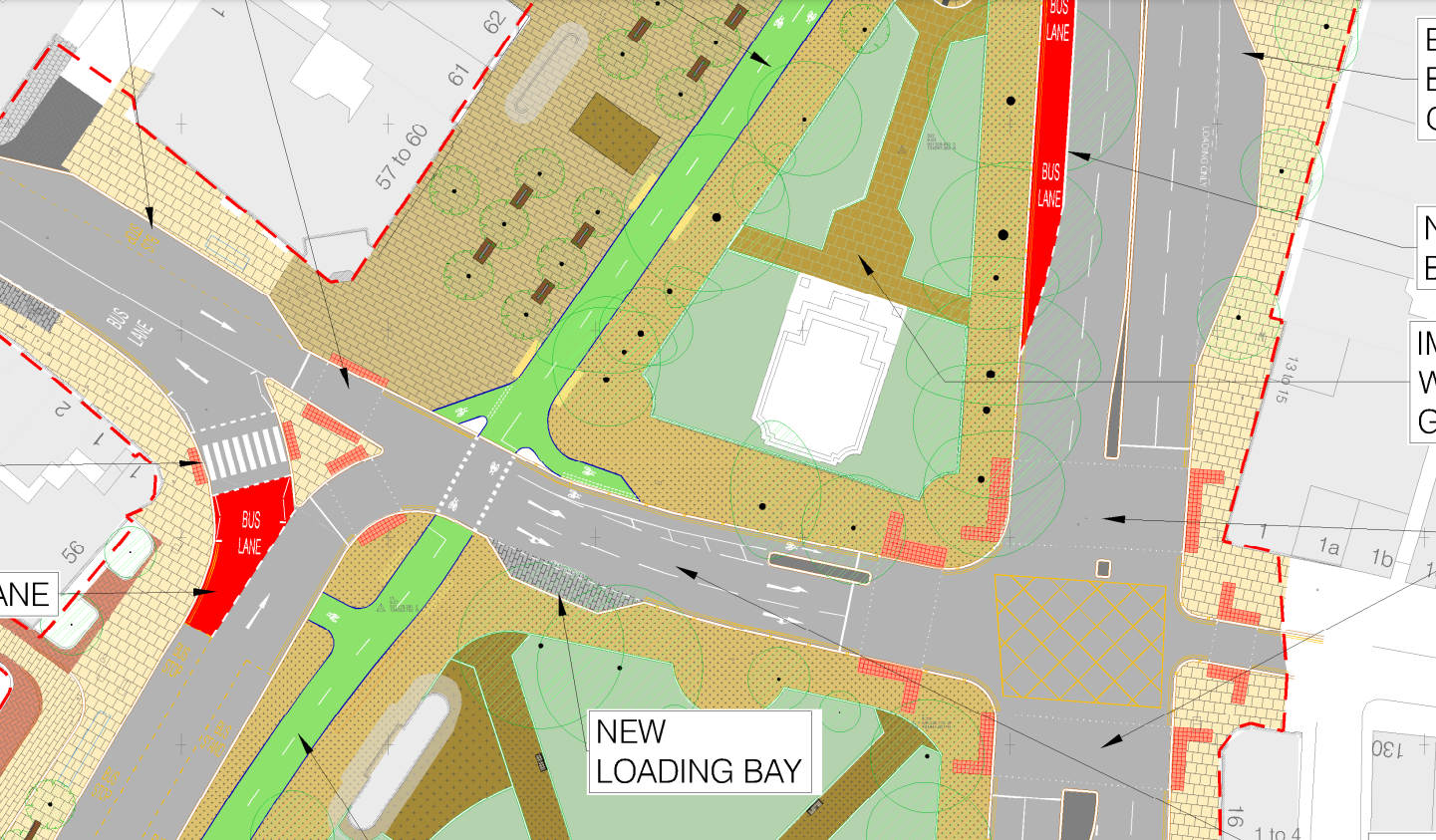
Many changes have been made to the centre section of Steine Gardens. The bus loop to the south has been redesigned requiring the road through the centre to remain a one-way road. The A23 to the south doesn’t feature a bus lane through the junction. On the Northern side of the junction a larger loading bay has been provided which can also be used for coaches.
The road through the centre remains one way with a cycle lane which allows cyclists to access St. James Street. The cycleway crossing was originally proposed to be a parallel crossing, but now will be signalised with additional pedestrian crossings. Some cycleway links also allow cyclists to join and leave the roads without having to wait at signals.
Additional bus stops would also be relocated onto the Western side of the loop, however on both sides of the carriageway.
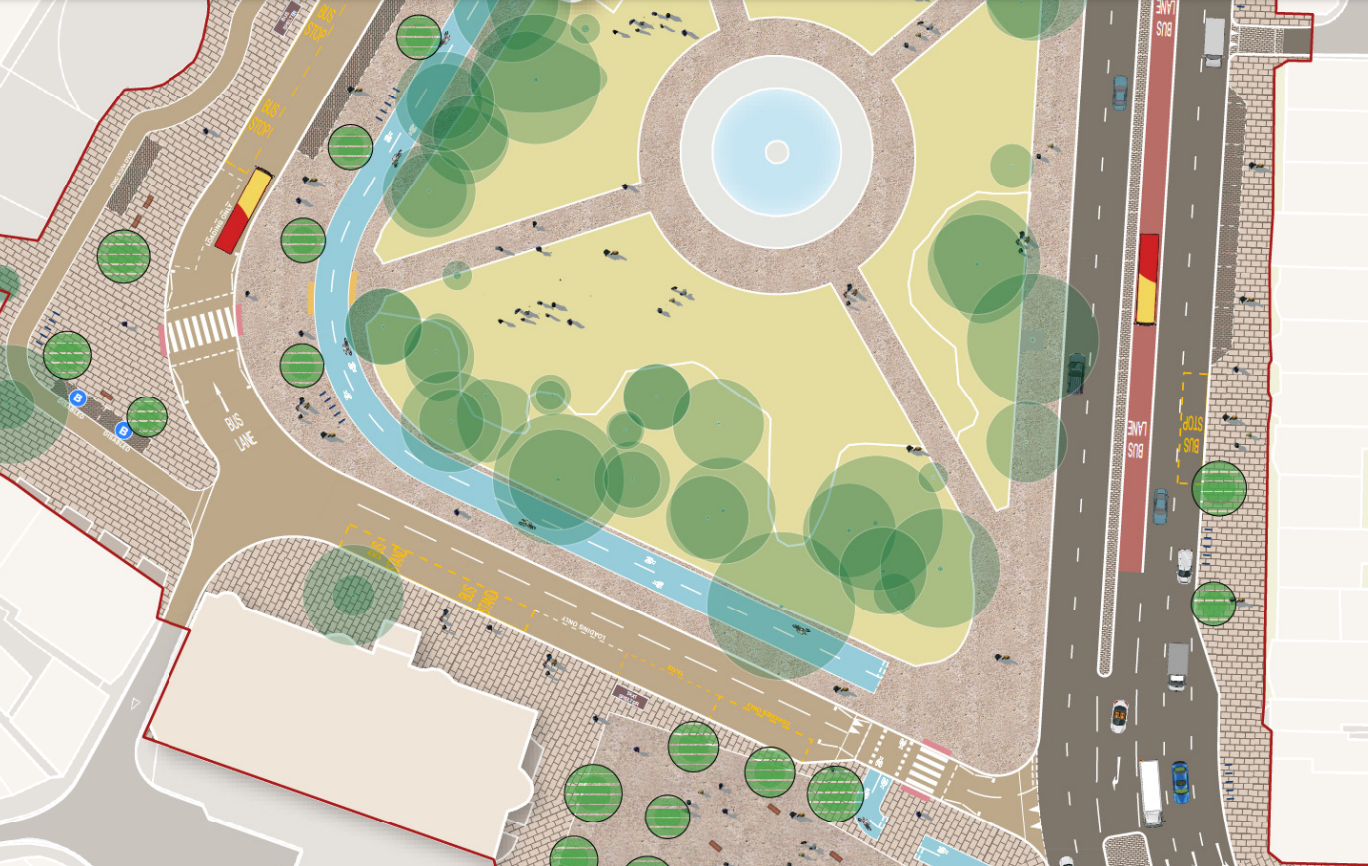
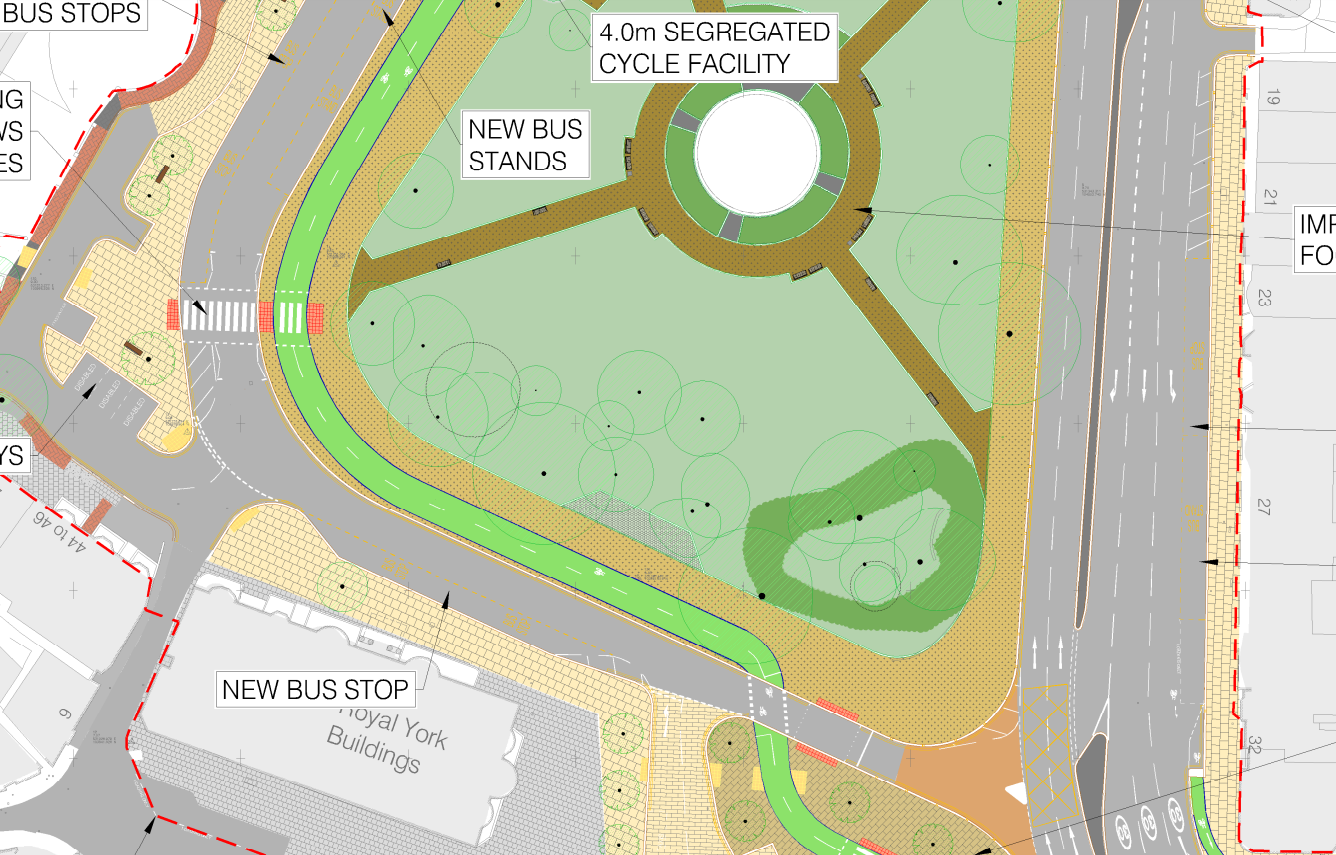
At the southern end of Steine gardens the scheme has also received major refinements. The bus lane is removed, and just becomes a long right turn lane which will be used by busses accessing the bus stop, as well as access to hotels & properties. This is not restricted, but cannot be used as a through route except for busses accessing Castle Square.
On the Eastern side of the A23, it is now proposed to be less formalized, with a taxi rank & bus stops.
The loop itself as mentioned is now proposed to be open to all traffic, however it does have a traffic signal controlled crossing at the start with a dedicated cycle crossing. The cycleway is now also continuous with no sections turning into shared areas. The zebra crossing has been retained from the previous design, however a zebra crossing is also provided over the cycleway.
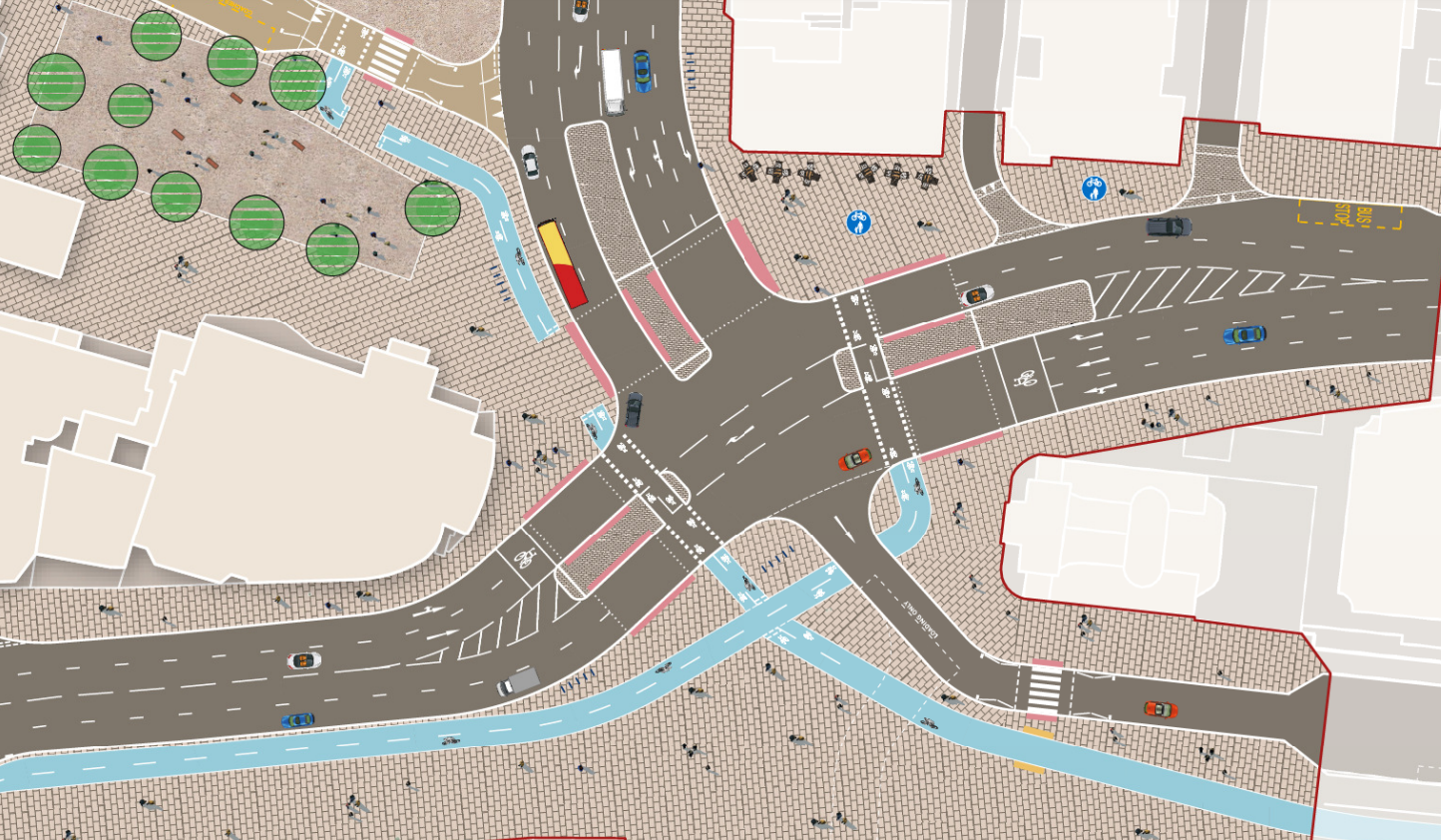
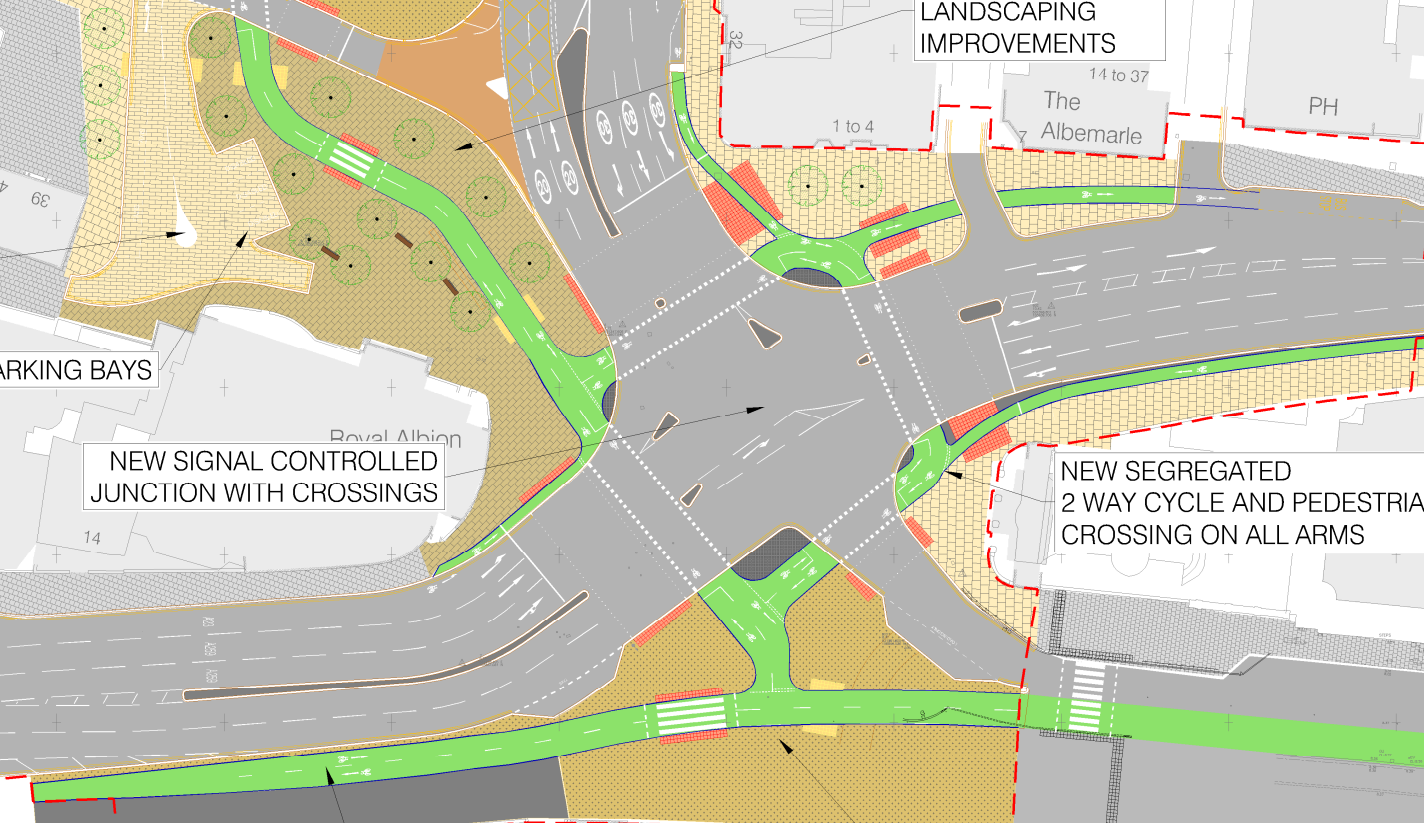
The Aquarium roundabout replacement is the most “controversial” part of the scheme. Currently the roundabout caters well for motor traffic, but NMUs have a awful route across all the roads, as well as the roundabout having a bad track record for safety. Replacing it with a traffic signal controlled junction is the best option as it allows the junction to maintain throughput of traffic, as well as providing excellent provision for cyclists & pedestrians in a form of a two-way CYCLOPS junction.
CYCLOPS junctions are uncommon in the UK, with the first open opening in 2020, however this will be the first ever two-way CYCLOPS junction. Cycle traffic has its own dedicated circular route around the junction which doesn’t cross over the pedestrian route, allowing both pedestrians & cyclists to move at the same time during an all-green crossing phase. This is very efficient, safe & convenient.
Cycle ingress is now provided for all directions onto the CYCLOPS junction, where a cyclist can make a left turn at any time giving way to pedestrians. One-way cycle tracks are now also included on the A259 heading East. This is part of the ATF Tranche 3 request and will tie into new cycle tracks along the A259 Marine Parade.
Since there has been changes to Madeira Drive last year, the plans now reflect this. The current Toucan crossing will also be replaced with a Zebra crossing.
In addition to better cycle and pedestrian provision, additional vehicle lanes are provided at the junction to increase its through put.
